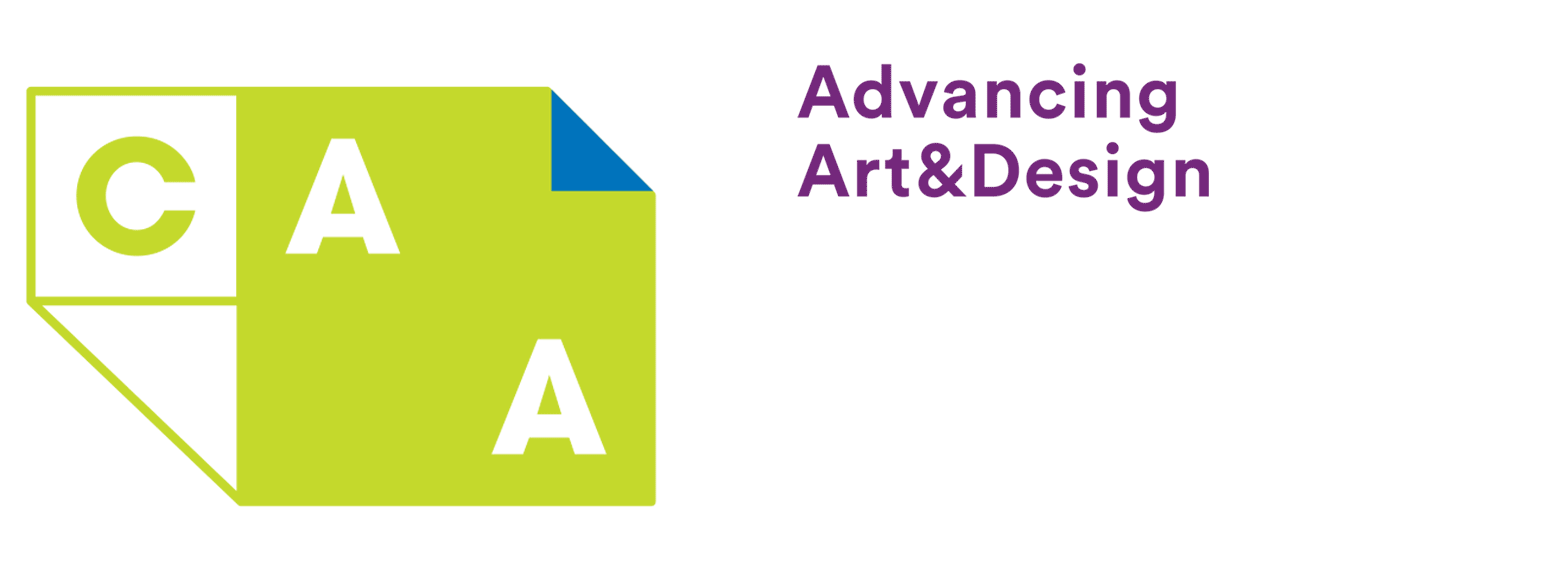CAA News Today
Announcing the 2021 Awards for Distinction Recipients
posted Feb 10, 2021
Honorees this year include Samella Lewis, Deborah Willis, Kenneth Frampton, and many other scholars, artists, and teachers, including special commendation for service to art historical scholarship to Gillian Malpass.
CAA Annual Conference, February 10-13, 2021
We are pleased to announce the recipients and finalists of the 2021 CAA Awards for Distinction. Among the winners this year is Samella Lewis, recipient of the 2021 Distinguished Artist Award for Lifetime Achievement. She was the first African American to earn a PhD in art history at Ohio State University. Mentored by Elizabeth Catlett and Charles White, Lewis embodied the visual culture of the civil rights movement through her prints. In addition to her studio practice, Lewis advocated African American art by writing for and creating exhibition venues. Her book, African American Art and Artists, originally published in 1978, was updated in subsequent editions and remains an important examination of more than two centuries of Black art and artists in the United States. For decades Lewis was a committed educator and scholar. In addition to her Fulbright, Lewis has been honored with a Charles White Lifetime Award (1993), with a UNICEF Award for the Visual Arts (1995), by being named a Getty Distinguished Scholar (1997), and by being interviewed by the HistoryMakers Archives (2003).

Deb Willis
and

Kenneth Frampton Photo credit: Alex Fradkin
Deborah Willis and Kenneth Frampton are the recipients of the 2021 Distinguished Lifetime Achievement Award for Writing on Art.
Deborah Willis has opened the field of African American photography. When the invention of photography coincided with the promise of abolition, a new arc of aspiration was combined. Its new pictures, thought to be the work of light itself, began to transmit images so that, as Frederick Douglass said, “Men of all conditions may see themselves as others see them.” From the first, photographs and photographic studios proliferated inside the Black community. It is the true extent of this practice that has been revealed by the lifework of Deborah Willis. In effect she has acted as its archaeologist, sifting through the layers from the time of Louis Daguerre to the surface of our present, retrieving the images and researching their histories.
Kenneth Frampton, trained as an architect, is a prolific architectural historian and critic who has managed to face the behemoth of globalized capital with an enduring version of humane modernity. Frampton has been writing about architecture for over half a century. A model of the architect-scholar, Frampton not only opens new cosmopolitan perspectives on the work of widely influential architects from Le Corbusier and Louis Kahn to Zaha Hadid and Álvaro Siza Vieira with his scholarship but also gives due attention to transitional spaces and movements.

Gillian Malpass
Gillian Malpass is the recipient of a CAA Commendation for Service to Art Historical Scholarship. As publisher of art and architectural history at Yale University Press, London, Gillian Malpass assembled a matchless list of titles over three decades that set the press apart from all others. She fostered projects that were gorgeously designed, accessibly written, and beautifully illustrated, including numerous now-classic books by both emerging and senior scholars. She worked on monographs, exhibition catalogs, reference, and biography, from books examining previously unexplored fields to bestsellers. Authors of many of the most important books published in art history over the past thirty years attest in their prefaces to the ways in which Malpass’s encouragement, expertise, and eye shaped their work.
The Awards for Distinction will be presented during Convocation at the CAA Annual Conference on Wednesday, February 10 at 6:00 PM. This event is free and open to the public. A free and open registration is required.
The full list of 2021 CAA Awards for Distinction Recipients:

Sampada Aranke
Sampada Aranke, “Blackouts and Other Visual Escapes,” Art Journal, vol. 79, no. 4 (Winter 2020): 62–75

Katherine A. Bussard
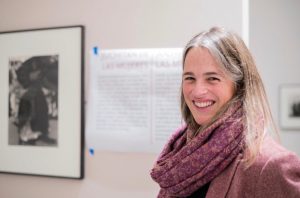
Kristen Gresh Photo credit: Oswaldo Ruiz
Katherine A. Bussard and Kristen Gresh, eds., “Life” Magazine and the Power of Photography, Princeton University Art Museum, 2020
and

Louis Marchesano
Louis Marchesano, ed., Käthe Kollwitz: Prints, Process, Politics, Getty Research Institute, 2020

Julieta Gonzalez

Tomás Toledo

Adriano Pedrosa

José Esparza Chong Cuy
Alfred H. Barr Jr. Award for Smaller Museums, Libraries, Collections, and Exhibitions
Adriano Pedrosa, José Esparza Chong Cuy, Julieta González, and Tomás Toledo, Lina Bo Bardi: Habitat, Museu de Arte de São Paulo Assis Chateaubriand (MASP) / DelMonico Books, 2020
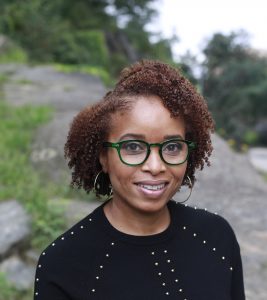
Nicole R. Fleetwood Photo credit: Bayeté Ross Smith
Nicole R. Fleetwood, Marking Time: Art in the Age of Mass Incarceration, Harvard University Press, 2020
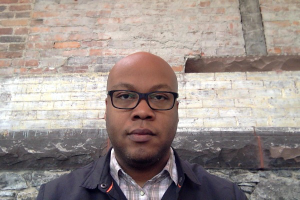
Charles L. Davis, II
Charles Rufus Morey Book Award
Charles L. Davis, II, Building Character: The Racial Politics of Modern Architectural Style, University of Pittsburgh Press, 2019
and

Nicole R. Fleetwood Photo credit: Bayeté Ross Smith
Nicole R. Fleetwood, Marking Time: Art in the Age of Mass Incarceration, Harvard University Press, 2020

Adam Jasienski
Adam Jasienski, “Converting Portraits: Repainting as Art Making in the Early Modern Hispanic World,” The Art Bulletin, vol. 102, no. 1 (March 2020): 7–30
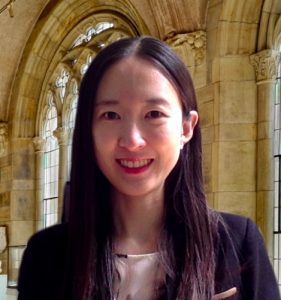
Jessie Park
Honorable Mention:
Jessie Park, “Made by Migrants: Southeast Asian Ivories for Local and Global Markets, ca. 1590–1640,” The Art Bulletin, vol. 102, no. 4 (December 2020): 66–89

Maren Hassinger Photo credit: Ava Hassinger
Artist Award for a Distinguished Body of Work
Maren Hassinger

Nancy Odegaard
CAA/AIC Award for Distinction in Scholarship and Conservation
Nancy Odegaard
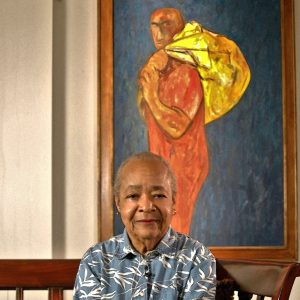
Samella Lewis
Distinguished Artist Award for Lifetime Achievement
Samella Lewis

Deb Willis
and

Kenneth Frampton Photo credit: Alex Fradkin
Distinguished Lifetime Achievement Award for Writing on Art
Deborah Willis and Kenneth Frampton
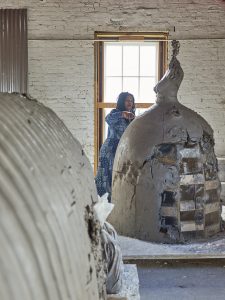
Simone Leigh Photo credit: Kyle Kodel
Distinguished Feminist Award—Artist
Simone Leigh

Katy Deepwell
Distinguished Feminist Award—Scholar
Katy Deepwell
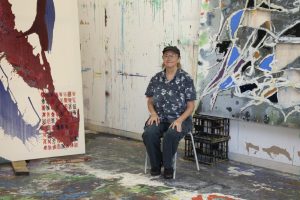
Dona Nelson
Distinguished Teaching of Art Award
Dona Nelson
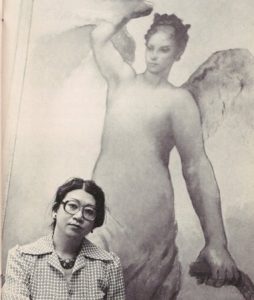
Kaori Kitao
Distinguished Teaching of Art History Award
Kaori Kitao
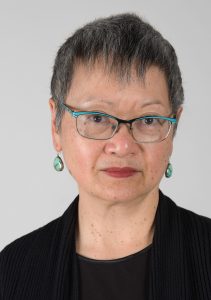
Margo Machida
Margo Machida

Gillian Malpass
CAA Commendation for Service to Art Historical Scholarship
Gillian Malpass
Learn about the juries that select the recipients of the CAA Awards for Distinction.
Guidelines from the Professional Practices Committee
posted Feb 03, 2021
CAA continues to stand in support of its members and our larger arts community to create, analyze, teach, and promote art within our higher educational institutions. In its role of responding to members’ concerns, particularly in relation to employment and various professional practices, CAA’s Professional Practices Committee (PPC) has drafted this short guide to existing CAA Standards and Guidelines to provide members with helpful vocabulary or needed disciplinary acknowledgment of standards that they may use as they are faced with institutional and economic challenges in the current environment. The below is not meant as an exhaustive list (and the PPC encourages all members to consult all of the approved Standards and Guidelines as well as the policies of the American Association of University Professors), but rather as a means of highlighting some key areas in which CAA members have come together to promote professional practices of use to us all. All of CAA’s standards are free and accessible to anyone via its website.
Hiring Contracts and Terms of Employment:
- Guidelines for the MFA Degree in Art and Design: https://www.collegeart.org/standards-and-guidelines/guidelines/mfa
- Guidelines for Part-Time Professional Employment: https://www.collegeart.org/standards-and-guidelines/guidelines/part-time
- Guidelines for Retention and Tenure of Art and Design Faculty: https://www.collegeart.org/standards-and-guidelines/guidelines/art-and-design-tenure
- Standards for Retention and Tenure of Art Historians: https://www.collegeart.org/standards-and-guidelines/guidelines/art-history-tenure
- Criteria for the Hiring and Retention of Visual Resources Professionals: https://www.collegeart.org/standards-and-guidelines/guidelines/hiring-visual-resources-professionals
- Guidelines Regarding the Hiring of Guest Curators by Museums: https://www.collegeart.org/standards-and-guidelines/guidelines/guest-curators
- Guidelines Regarding the Hiring of Catalog Essayists: https://www.collegeart.org/standards-and-guidelines/guidelines/guest-essayists
Faculty/Staff/Curator Roles:
- Guidelines for Addressing Proposed Substantive Changes to an Art, Art History, or Design Unit or Program at Colleges and Universities: https://www.collegeart.org/standards-and-guidelines/guidelines/changes
- Guidelines for the MFA Degree in Art and Design: https://www.collegeart.org/standards-and-guidelines/guidelines/mfa
- Guidelines for Associate Degrees in Art and Design: https://www.collegeart.org/standards-and-guidelines/guidelines/afa-art-design
- Guidelines for Baccalaureate Degrees in Art and Design: https://www.collegeart.org/standards-and-guidelines/guidelines/bfa
- Guidelines for Faculty Teaching in New-Media Arts: https://www.collegeart.org/standards-and-guidelines/guidelines/new-media
- Guidelines for Part-Time Professional Employment: https://www.collegeart.org/standards-and-guidelines/guidelines/part-time
- Guidelines for Retention and Tenure of Art and Design Faculty: https://www.collegeart.org/standards-and-guidelines/guidelines/art-and-design-tenure
- Professional Practices for Artists: https://www.collegeart.org/standards-and-guidelines/guidelines/practices
- Standards for the Practice of Art History: https://www.collegeart.org/standards-and-guidelines/guidelines/art-history-ethics
- Professional Practices for Art Museum Curators: https://www.collegeart.org/standards-and-guidelines/guidelines/curators
Proposed Changes to the Structure/Content of an Academic Unit:
- Guidelines for Addressing Proposed Substantive Changes to an Art, Art History, or Design Unit or Program at Colleges and Universities: https://www.collegeart.org/standards-and-guidelines/guidelines/changes
- General Principles for Academic Arts Administrators: https://www.collegeart.org/standards-and-guidelines/guidelines/art-administrators
Teaching Load:
- Guidelines for the MFA Degree in Art and Design: https://www.collegeart.org/standards-and-guidelines/guidelines/mfa
- Guidelines for Associate Degrees in Art and Design: https://www.collegeart.org/standards-and-guidelines/guidelines/afa-art-design
- Guidelines for Baccalaureate Degrees in Art and Design: https://www.collegeart.org/standards-and-guidelines/guidelines/bfa
- Guidelines for Faculty Teaching in New-Media Arts: https://www.collegeart.org/standards-and-guidelines/guidelines/new-media
- Guidelines for Part-Time Professional Employment: https://www.collegeart.org/standards-and-guidelines/guidelines/part-time
- Guidelines for Retention and Tenure of Art and Design Faculty: https://www.collegeart.org/standards-and-guidelines/guidelines/art-and-design-tenure
- Professional Practices for Artists: https://www.collegeart.org/standards-and-guidelines/guidelines/practices
- Standards for the Practice of Art History: https://www.collegeart.org/standards-and-guidelines/guidelines/art-history-ethics
Job-Seeking Resources:
- Guidelines for Part-Time Professional Employment: https://www.collegeart.org/standards-and-guidelines/guidelines/part-time
- Standards for Professional Placement: https://www.collegeart.org/standards-and-guidelines/guidelines/placement
- Guidelines for Retention and Tenure of Art and Design Faculty: https://www.collegeart.org/standards-and-guidelines/guidelines/art-and-design-tenure
- Standards for Retention and Tenure of Art Historians: https://www.collegeart.org/standards-and-guidelines/guidelines/art-history-tenure
- Criteria for the Hiring and Retention of Visual Resources Professionals: https://www.collegeart.org/standards-and-guidelines/guidelines/hiring-visual-resources-professionals
- Guidelines for Interviews: https://www.collegeart.org/standards-and-guidelines/guidelines/etiquette
- Artist Résumé: https://www.collegeart.org/standards-and-guidelines/guidelines/resume
- Curriculum Vitae for Visual Artists: https://www.collegeart.org/standards-and-guidelines/guidelines/visual-art-cv
- Guidelines for Presenting Work in Digital Formats: https://www.collegeart.org/standards-and-guidelines/guidelines/digital-format
- Curriculum Vitae for Art Historians: https://www.collegeart.org/standards-and-guidelines/guidelines/art-history-cv
- Curriculum Vitae for Museum Professionals: https://www.collegeart.org/standards-and-guidelines/guidelines/museum-cv
Status of Terminal Degrees:
- Guidelines for the MFA Degree in Art and Design: https://www.collegeart.org/standards-and-guidelines/guidelines/mfa
- Statement on Terminal Degree Programs in the Visual Arts and Design: https://www.collegeart.org/standards-and-guidelines/guidelines/terminal-degree-programs
CAA Advocacy Statement
posted Feb 03, 2021
In the past year we have experienced unprecedented changes in the social, economic, and interpersonal landscape: transformations in higher education; financial uncertainty; home-work imbalance; quarantine during a global pandemic; a divisive political climate; the US election cycle; and the Black Lives Matter and #SayHerName protests following the violent killings of Ahmaud Arbery, Breonna Taylor, George Floyd, and so many more. We have seen changes for us as teachers, scholars, makers, writers, and advocates for higher education and the place of academic arts discourse and development in this new world. We have seen great inequities in and serious changes to higher education that have affected faculty, staff, students, and the long-term support of art, art history, and design—as well as changes to our pedagogy, our community, and the very structure of who is cared for and how. We have suffered enormous losses and continue to mourn. These losses have had an immense impact on all of us, including underserved BIPOC communities, adjunct faculty, and arts communities unaffiliated with institutions. Significantly, this time has affected our greatest assets: connecting to, sharing with, and knowing our community.
How CAA offers service and support to our members has also changed as we work to become more inclusive, more diverse, and more equitable in the community at large. However, because so much of 2020 was spent “coping with” and “adjusting to,” we haven’t had the time to pause and reflect. We wonder what the future will look like, and as an organization, how to offer structure and support as we learn and grow together. As part of these changes we have been faced with the hard choice of what to do in the face of adversity. This community of artists, historians, and designers has risen to the moment, adapted, and supported one another. CAA has advocated for you by adapting in its greatest shift ever: to a fully online Annual Conference. Although this has sometimes felt like a pressure point, perhaps it is just a growing pain—and we will continue to show up for community more strongly and profoundly than ever before.
To ensure lasting change, we are committed to the following:
- Expanding on the Annual Conference’s virtual format, becoming ever more accessible and globally inclusive
- Expanding advocacy for underserved and BIPOC communities
- Developing and offering free and open professional resources via collegeart.org
- Increasing access to participation of our global community throughout the year
- Including diverse voices and supporting new outreach and inclusionary initiatives, especially for populations and communities that we have not engaged before: geographically, culturally, and in socioeconomic diversity
- Helping reshape the landscape of professional support via a strategic digital overhaul
- Listening to member concerns and responding with thoughtful urgency, bringing ease to transitions
CAA will continue to regularly address the changing workforce conditions in academic and cultural institutions, including for students and for the trajectory of adjunct faculty; enhance equity, diversity, accessibility, and inclusion initiatives in higher education, including promoting best practices in the reduction of systemic barriers, in faculty and staff hiring, in the support and recruitment of first-generation students from diverse and underrepresented groups, and in the implementation of sound consultative processes involving the affected communities; and increase public awareness and institutional recognition regarding the value and importance of humanities scholarship and visual arts and design education within the academy and beyond it.
CAA, its board, and its staff continue to stand in support of its members and our larger arts community to create, analyze, teach, and promote art within our higher educational and cultural institutions.
Written in solidarity and as affirmation of CAA’s commitment to the diversity of practices and practitioners we serve.
Related resources:
Guidelines from the Professional Practices Committee
Art Journal Winter 2020 Video Abstract, “Now’s the Time,” a message from Jordana Moore Saggese
Art Journal Winter 2020, Blackness Issue (free online until March 31, 2021)
Mattie Schloetzer and Jason Vrooman: Remote and Virtual Internships
posted Feb 02, 2021
The CAA Conversations Podcast continues the vibrant discussions initiated at our Annual Conference. Listen in as educators explore arts and pedagogy, tackling everything from the day-to-day grind to the big, universal questions of the field.
CAA podcasts are on iTunes. Click here to subscribe.
In this week’s podcast, Mattie Schloetzer and Jason Vrooman come together to discuss trials and triumphs of remote and virtual museum internships during the COVID era.
Mattie Schloetzer is the administrator of internships and museum fellowships at the National Gallery of Art and a member of the CAA professional practices committee. She is co-chairing the session, “Best Practices and Lessons Learned from the Digital Shift to Prepare Students for Professional Success,” at the 2021 CAA Annual Conference, February 10–13.
Jason Vrooman is a curator and educator at the Middlebury College Museum of Art. He especially enjoys letting conversations with museum-goers of all ages inform acquisitions and talking about ethics and equity with the next generation of museum professionals.
Survey: Help us frame our new guidelines
posted Feb 02, 2021

Attendees at CAA’s 108th Annual Conference in Chicago, 2020. Photo: Stacey Rupolo
Can you take a few moments to help CAA’s Professional Practices Committee in its efforts to develop guidelines on assessment and evaluation in art and design?
Assessment and evaluation are often thought of and valued (or not valued) in different ways, according to peoples’ diverse academic positions and purposes that these tools will serve. As CAA is not an accrediting agency, the Committee’s guidelines will, in part, focus on providing a broad framework for best practices, clarifying what is a common understanding of assessment and evaluation for art and design, and providing recommendations that will help educators and academic units focus on equity, student success, and improve instruction, research and curricular development.
Please consider replying to the questions that you find most important, timely, or needed to support your work and program. Your time and any feedback you can provide to help frame the Committee’s new guidelines are greatly appreciated.
Please submit your responses by 11:59 PM (EST) Monday, February 8, 2021.
Global Conversations at the 2021 Conference
posted Feb 01, 2021

Celebrating Ten Years of the CAA-Getty International Program!
CAA-Getty Global Conversation I: The Migration of Art and Ideas
Live Q&A: Thursday, February 11, 10-10:30 AM
CAA-Getty Global Conversation II: The Climate Crisis, Pandemics, Art, and Scholarship
Live Q&A: Thursday, February 11, 12-12:30 PM
CAA-Getty Global Conversation III: The Challenges, Disobediences and Resistances of Art in the Transnational Imagination
Live Q&A: Friday, February 12, 12-12:30 PM
CAA-Getty Global Conversation IV: Disruptive Pedagogies and the Legacies of Imperialism and Nationalism
Live Q&A: Friday, February 12, 2-2:30 PM
CAA-Getty Global Conversation V: A Multiplicity of Perspectives at the Museum of Modern Art (In conversation with curators at MoMA)
Live Q&A: Saturday, February 13, 10-10:30 AM
See conference schedule for details:
https://caa.confex.com/caa/2021/meetingapp.cgi
CAA signs on to AHA statement condemning the “1776 Report”
posted Feb 01, 2021
CAA joins 41 other organizations in signing on to a statement by the American Historical Association (AHA) condemning the report from “The President’s Advisory 1776 Commission.” “Written hastily in one month after two desultory and tendentious ‘hearings,’” the AHA writes, “without any consultation with professional historians of the United States, the report fails to engage a rich and vibrant body of scholarship that has evolved over the last seven decades.”
The just –released “1776 Report” claims that common understanding of the Declaration of Independence and the Constitution can unify all Americans in the love of country. The product of “The President’s Advisory 1776 Commission,” the report focuses on these founding documents in an apparent attempt to reject recent efforts to understand the multiple ways the institution of slavery shaped our nation’s history. The authors call for a form of government indoctrination of American students, and in the process elevate ignorance about the past to a civic virtue.
AHA Condemns Report of Advisory 1776 Commission (January 2021) | AHA (historians.org)
CAA signs on to ACLS statement on recent Kansas Board of Regents Actions
posted Feb 01, 2021
CAA, along with 23 other member societies, has signed on to a statement issued by the ACLS urging the Kansas Board of Regents to uphold employment protections for faculty.
The statement urges the Kansas Board of Regents to withdraw its endorsement of the proposed policy to ease the path to suspending, dismissing, or terminating employees, including tenured faculty members, without undertaking the processes of formally declaring a financial emergency.
It also calls attention to the statement co-signed in summer 2020 by leaders of cultural institutions and scholarly societies, including CAA, attesting to the importance of teaching and research to sustaining a robust economy and a just democracy.
Meet the Meiss Fund Recipients for Fall 2020
posted Jan 25, 2021

A woman seated on a obstetrical chair giving birth aided by a midwife who works beneath her skirts. Woodcut.
MEET THE GRANTEES
Twice a year, CAA awards grants through the Millard Meiss Publication Fund to support book-length scholarly manuscripts in the history of art, visual studies, and related subjects that have been accepted by a publisher on their merits, but cannot be published in the most desirable form without a subsidy.
Thanks to the generous bequest of the late Prof. Millard Meiss, CAA began awarding these publishing grants in 1975.
The Millard Meiss Publication Fund grantees for Fall 2020 are:
- Cammy Brothers, Giuliano da Sangallo and the Ruins of Rome, Princeton University Press
- Lindsay Caplan, Programmed Art: Freedom, Control, and Computation in 1960s Italy, University of Minnesota Press
- Margaret Graves and Alex Dika Seggerman, Making Modernity in the Islamic Mediterranean, Indiana University Press
- Diana Greenwald, Painting by Numbers: Data-Driven Histories of Nineteenth Century Art, Princeton University Press
- Subhashini Kaligotla, Shiva’s Waterfront Temples: Self and Space in Medieval India, Yale University Press
- Sigrid Lien, Colonial Legacies, Decolonial Activism: Indigenous Photographs Revisited, University of British Columbia Press
- Elizabeth Perrill, Burnished: Zulu Ceramics Between Rural and Urban South Africa , Indiana University Press
- Stephanie Sparling Williams, Speaking Out of Turn: Lorraine O’Grady and the Art of Language, University of California Press
- Rebecca Whiteley, Birth Figures: Early Modern Prints and the Pregnant Body, University of Chicago Press
Read a list of all recipients of the Millard Meiss Publication Fund from 1975 to the present. The list is alphabetized by author’s last name and includes book titles and publishers.
BACKGROUND
Books eligible for a Meiss grant must currently be under contract with a publisher and be on a subject in the arts or art history. The deadlines for the receipt of applications are March 15 and September 15 of each year. Please review the Application Guidelines and the Application Process, Schedule, and Checklist for complete instructions.
CONTACT
Questions? Please contact Cali Buckley, Grants and Special Programs Manager, at cbuckley@collegeart.org.
Art Journal Winter 2020 Video Abstract, “Now’s the Time,” a Message from Jordana Moore Saggese
posted Jan 13, 2021
Video Abstract – Now’s the Time from Taylor & Francis on Vimeo.
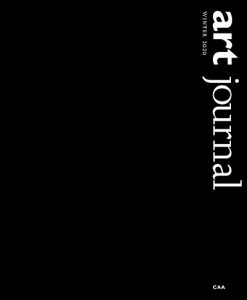
Art Journal Winter 2020
Usually when I sit down to write the introduction to a forthcoming issue of Art Journal, I am pleasantly surprised to find intrinsicconnections between the work we do as artists, historians, and critics. In past issues we have learned to look differently, to take matters personally, and to think in the present tense. And somehow we have done all this against an evolving (and often terrifying) backdrop of political, economic, social, environmental, and health crises. As I write this essay in early October, the pressure of reality—including the upcoming US presidential election—has made it difficult for many of us to orient ourselves to our research and creative practices. But, at the same time, the urgency of this work has never seemed more real.
In 2015 Toni Morrison wrote an essay for The Nation that, in part, framed her own feelings of helplessness in times of political and social turmoil. These days I find myself turning to these words again and again:
This is precisely the time when artists go to work. There is no time for despair, no place for self-pity, no need for silence, no room for fear. We speak, we write, we do language. That is how civilizations heal.
I know the world is bruised and bleeding, and though it is important not to ignore its pain, it is also critical to refuse to succumb to its malevolence. Like failure, chaos contains information that can lead to knowledge—even wisdom. Like art.
And so we must keep writing, making, and teaching. We must try to cultivate wisdom instead of succumbing to despair.
With Morrison’s mandate in mind I introduce this special edition of Art Journal: an issue centered on Blackness. The ideas represented here have been carefully brought into an intentional conversation around the experiences, expressions, and theorizations of Blackness. We have artist projects by two Black women—Allison Janae Hamilton and Chanell Stone—and all the book and exhibition reviews center on works by and about Black artists (thanks to the tireless effort of our reviews editor, Mechtild Widrich). The feature essays reorient our attention to artists—Mark Bradford, Samuel Levi Jones, Glenn Ligon, Howardena Pindell, Jack Whitten—who explore the histories, sensations, and consequences of Blackness in their work.
As argued so compellingly by Leigh Raiford in her essay, “Our work is to recognize how white supremacy functions as a way of seeing that any person of any race or positionally can work to undo.” I hope that in editing the first issue of Art Journal to focus exclusively on Blackness, I have provided a counterweight to the ideology of white supremacy that has infected our political landscape in the United States and (in so many ways) the history of art itself. As we mourn the murders of Ahmaud Arbery, Breonna Taylor, and George Floyd and the deaths of thousands from COVID-19, let us also work toward the new future and find meaning in the chaos.
– Jordana Moore Saggese
The entire issue of Art Journal Winter 2020 is free to read through March 31, 2021.
